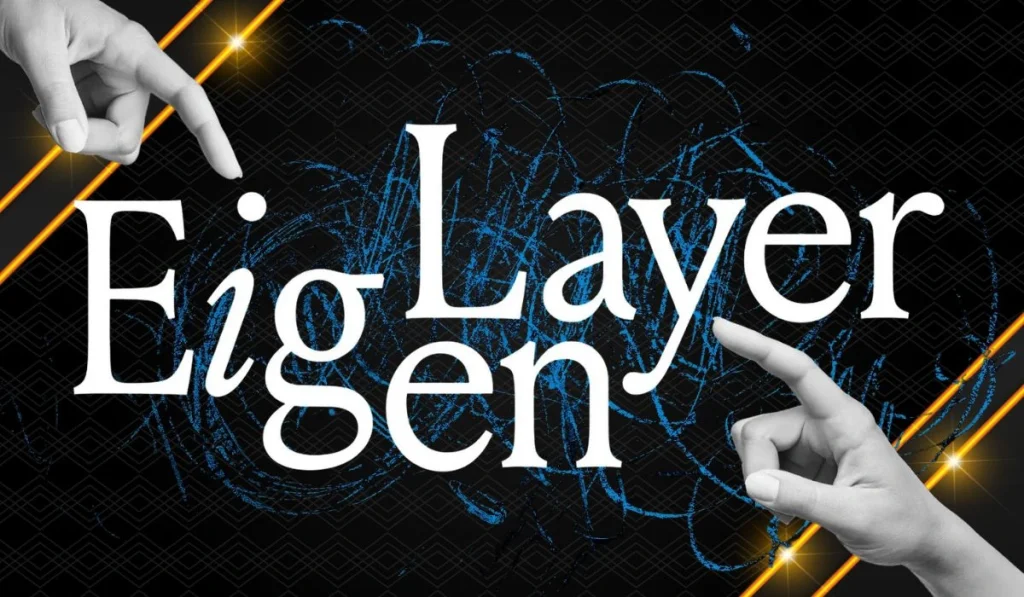EigenLayer, the latest and biggest project of Crypto this year, has been in the limelight since its launch. They serve as contractors connecting the latest projects with the already running bigger Ethereum projects.
The EigenLayer protocol is built on top of the Ethereum network. It has presented the idea of the “restaking collective”, which enables ETH holders to reallocate their Liquid Staking Tokens (LSTs) and Staked ETH to bolster security and other protocols built on that network. The restaking crypto economic primitive facilitates network expansion.
EigenLayer appears as an Ethereum decentralized service solution that makes Ethereum’s collective security resources more accessible. It promotes an environment that is favorable to decentralized innovation and governance.
EigenLayer has established itself as a dynamic, decentralized trust market. The protection that the stakeholder provides to developers may be advantageous to them, and the stakeholders can assist developers in enhancing their work.
How does EigenLayer work?
You can deposit Ether (ETH) for a certain period and this is called “staking” or locking. This will help the Ethereum network and in return for your deposit of the ETH, you will be rewarded with staking rewards. EigenLayer has introduced the concept of restaking as it enables you to earn more rewards for your staked ETH as the infrastructure of EigenLayer is for pooled Ethereum security.

EigenLayer presents a security method based on modules. It enables the users to donate their Ethereum to secure network features referred to as modules. Dedicated modules can be used for securing decentralized storage solutions.
Ethereum stakeholders may use EigenLayer smart contracts to restake their staked ETH, providing new security and validation services to designated network modules. To do this, Eigenlayer contracts are given the authority to impose restrictions on staked assets.
Restaking can be done in two ways. Solo Staking and Delegation. In Solo staking users can actively verify transactions for the modules by running their nodes. Highly experienced users can utilize this approach. Delegation is a practical way for people to contribute to EigenLayer without getting involved in the technical details. Other members within the network delegate the node operation.
Eigenlates has fabricated a network that is adaptable to the specifications of stakeholders. The preferences, capabilities, and risk tolerance of the stakeholders can differ, hence EigenLayer allows adjustments in the modules as per the requirements of the stakeholders.
Key Factors of EigenLayer:
Staking on EigenLayer
The staked ETH becomes temporarily locked in the traditional staking and while it is locked, the users are unable to use it. In contrast to traditional staking, EigenLayer permits the users to leverage the staked ETH for additional purposes. There are two staking options available on EigenLayer for the users to choose from:
- Native Restaking
This involves the Ethereum validator’s withdrawal to the Eigenpod. The approval of the Etherium validator is essential to participate in native staking.
- Liquid Restaking
Users can lock their liquid staking tokens and LST to EigenLayer smart contracts. The LST staked already on the protocols like Rocket Pool and Lido are taken by the validators to restake them into the EigenLayer
Pros and Cons of Eigan Layer
Check out the pros and cons of the EigenLayer crypto:
Pros:
Enhanced Protection: EigenLayer has strengthened the security of the decentralized application built on modules by leveraging the validators for various modules. Users can use a reliable and trustable environment while interacting with the decentralized application. This increases the protocol’s initial security and allows it to connect with a much wider range of validators.
Evaluation and Testing: Before integrating the functionality of the new Ethereum into the fully functional blockchain, EigenLayer acts as a platform for testing and validation. This functionality helps developers experiment with new and innovative new ideas.
Capital Efficiency: EigenLayer enhances the capital efficiency advantage by enabling users to stake their ETH on multiple protocols, each offering a unique set of extra benefits.
Cons:
Risk of Centralization: The potential for centralization problems also exists as the prospects of higher incline may lead some ETH delegators. In the case of exploitation, this puts the Ethereum network in danger of complete failure.
Module Risks: The EignLayer is known for its flexibility in the module design but this can also increase the potential risk of the collision between malicious actors who are in control of multiple modules.
Confusion: EigenLayer is an added layer on top of the Ethereum blockchain. The functioning of restaking as well as the managing of modules can be confusing for some users.
Conclusion
EigenLayer is one of the most intriguing protocols that have been developed recently. The “restaking collective” has the potential to be a game changer. The framework of EigenLayer allows the advantage of many parties.
.Market players can utilize their wealth to gain additional rewards and developers working on decentralized applications (DApps) will now have access to the endless innovative possibilities of Ethereum.
Considering the enhanced security and innovation introduced to the market, EigenLayer has the potential to grow stronger. This will be a major factor in attracting more people to the ecosystem so they can actively engage with it.
Cryptocurrency and related investments are subjected to risks, hence it is advised to investigate thoroughly before investing.
Related Articles: Top 10 Bitcoin Mining Countries Using Renewable Energy
